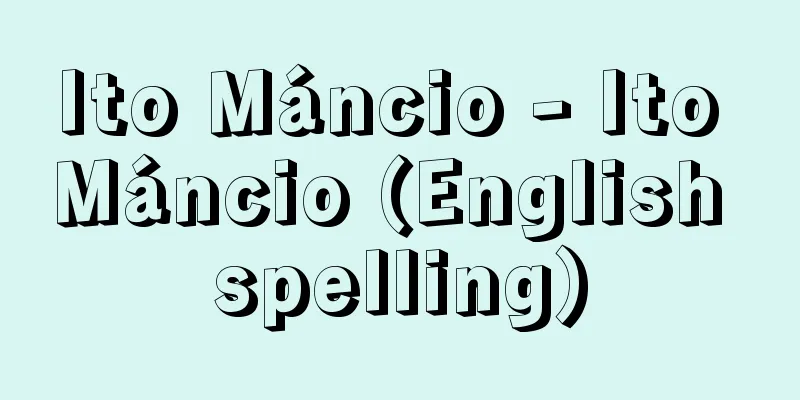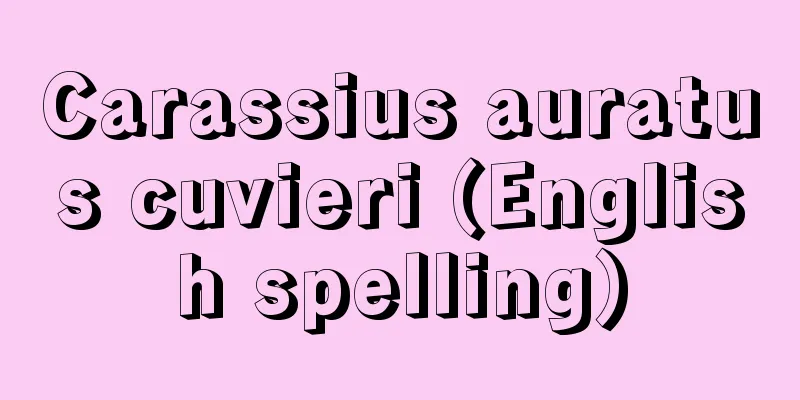Ito Máncio - Ito Máncio (English spelling)

|
He was the chief envoy of the Tensho Embassy to Europe. He was born in Tonokoori, the capital of Hyuga Province (Kanoda, Saito City, Miyazaki Prefecture), to Shuri no sukekiyo (?-1577), a member of the branch of the Hyuga Ito clan, and the younger sister of "King" Yoshimasu (1546-1569), and was a distant relative of Otomo Sorin. His Japanese name has traditionally been called Sukemasu, but it is unknown. Mancio was his baptismal name. He was baptized in Usuki (Oita Prefecture) in 1580 (Tensho 8), and when Valignano came to Bungo (Oita Prefecture) in the same year, he was sent to the seminary (minor seminary) in Arima (Nagasaki Prefecture). When Valignano returned to Europe, he planned to send a young mission and chose Mancio, along with three other young boys, to represent the "King" of Bungo. On February 20, 1582, the group set sail from Nagasaki and was warmly welcomed throughout Europe, eventually meeting Pope Gregory XIII in March 1585 (Tensho 13). In 1590, he returned to Japan, where Christianity was banned, and met Toyotomi Hideyoshi. In 1591, he joined the Society of Jesus in Amakusa (Kumamoto Prefecture), and was ordained a priest in 1608 (Keicho 13). He was assigned to Kokura (Fukuoka Prefecture), and engaged in missionary work in Hagi (Yamaguchi Prefecture), Yamaguchi, and Obi (Miyazaki Prefecture). He returned to Nagasaki in 1612 (Keicho 17) and died of an illness at the Nagasaki College (Great Seminary) in the same year. He had the important role of being a bridge between Eastern and Western cultures, but the passage of time did not allow this. [Kentaro Miyazaki March 19, 2018] "The Journal of the Kyushu Embassy to Europe, by Luis Frois, translated and annotated by Okamoto Yoshitomo (1942, Toyodo)" ▽ "New Foreign Books 5: The Journal of the Tensho Embassy to Europe, edited by De Sande, translated by Izumi Hisanosuke et al. (1969, Yushodo Shoten)" ▽ "The Christians Who Traveled the World, by Hubert Cieslik (1971, Shunjusha)" ▽ "The Tensho Embassy, by Matsuda Takeichi (Kadokawa Shinsho)" [References] | | |Source: Shogakukan Encyclopedia Nipponica About Encyclopedia Nipponica Information | Legend |
|
天正(てんしょう)遣欧使節の正使。日向(ひゅうが)国都於郡(とのこおり)(宮崎県西都(さいと)市大字鹿野田(かのだ))にて日向伊東氏の分家修理亮(しゅりのすけ)祐青(すけきよ)(?―1577)と「国王」義益(よします)(1546―1569)の妹の間に生まれ、大友宗麟(おおともそうりん)の遠縁にあたる。従来日本名を祐益(すけます)といわれてきたが不詳。マンショは洗礼名。1580年(天正8)臼杵(うすき)(大分県)にて受洗し、バリニャーノが同年豊後(ぶんご)(大分県)へきたとき、有馬(ありま)(長崎県)のセミナリオ(小神学校)に送られた。バリニャーノはヨーロッパへ帰るとき、少年使節団派遣を計画し、マンショを豊後「国王」の代理として他の3名の少年たちとともに選んだ。1582年2月20日、一行は長崎を出帆し、ヨーロッパ各地で大歓迎を受けながら、1585年(天正13)3月教皇グレゴリウス13世に謁見した。1590年禁教令下の日本へ戻り、豊臣秀吉(とよとみひでよし)に謁見、1591年天草(熊本県)においてイエズス会に入り、1608年(慶長13)司祭に叙階された。小倉(こくら)(福岡県)へ赴任し、萩(はぎ)(山口県)、山口、飫肥(おび)(宮崎県)の布教に従事。1612年(慶長17)長崎へ戻り、同年長崎のコレジオ(大神学校)にて病死した。東西文化の架け橋ともなるべき重要な役割を負っていたが、時の流れはそれを許さなかった。 [宮崎賢太郎 2018年3月19日] 『ルイス・フロイス著、岡本良知訳註『九州三侯遣欧使節行記』(1942・東洋堂)』▽『デ・サンデ編、泉井久之助他訳『新異国叢書5 天正遣欧使節記』(1969・雄松堂書店)』▽『フーベルト・チースリク著『世界を歩いた切支丹』(1971・春秋社)』▽『松田毅一著『天正少年使節』(角川新書)』 [参照項目] | | |出典 小学館 日本大百科全書(ニッポニカ)日本大百科全書(ニッポニカ)について 情報 | 凡例 |
Recommend
Carbinol nomenclature - Carbinol nomenclature
...For example, ethyl alcohol CH 3 CH 2 OH is met...
Wear it on your clothes - emonnikuru
...It expresses an active, distraught, or sick ap...
Oimi Festival - Oimi Festival
This was one of the four seasonal festivals held a...
Varignon, P. (English spelling) VarignonP
...One of the reasons why Newton and other Britis...
Alaria crassifolia
A brown algae of the Laminariales family. It grows...
Resurrection - Sosei
[Noun] (Suru) To regain one's breath. To come ...
Adam Erikovich Laksman
The first Russian envoy to Japan. He was born as ...
The world's concubine form - Sekentekakekatagi
Ukiyo-zoshi. Temperamental Subjects. Four volumes....
《Space Philosophy》
…He belonged to the School of Chartres, and in th...
Caramel - Caramel
…It is a type of soft candy made mainly from suga...
Kidara (English spelling)
...From this time on, the dynasty lost the wester...
Orsen, N.
...Then it split into water ballet and sports-lik...
Pinnipedia
…A mammal that belongs to the Pinnipedia suborder...
Gastric diarrhea - Isigeri
Diarrhea caused by some cause in the stomach. In ...
keep
…The Norman knights' castles were built in a ...



![Ryozen [town] - Ryozen](/upload/images/67cd2c8e675c6.webp)





